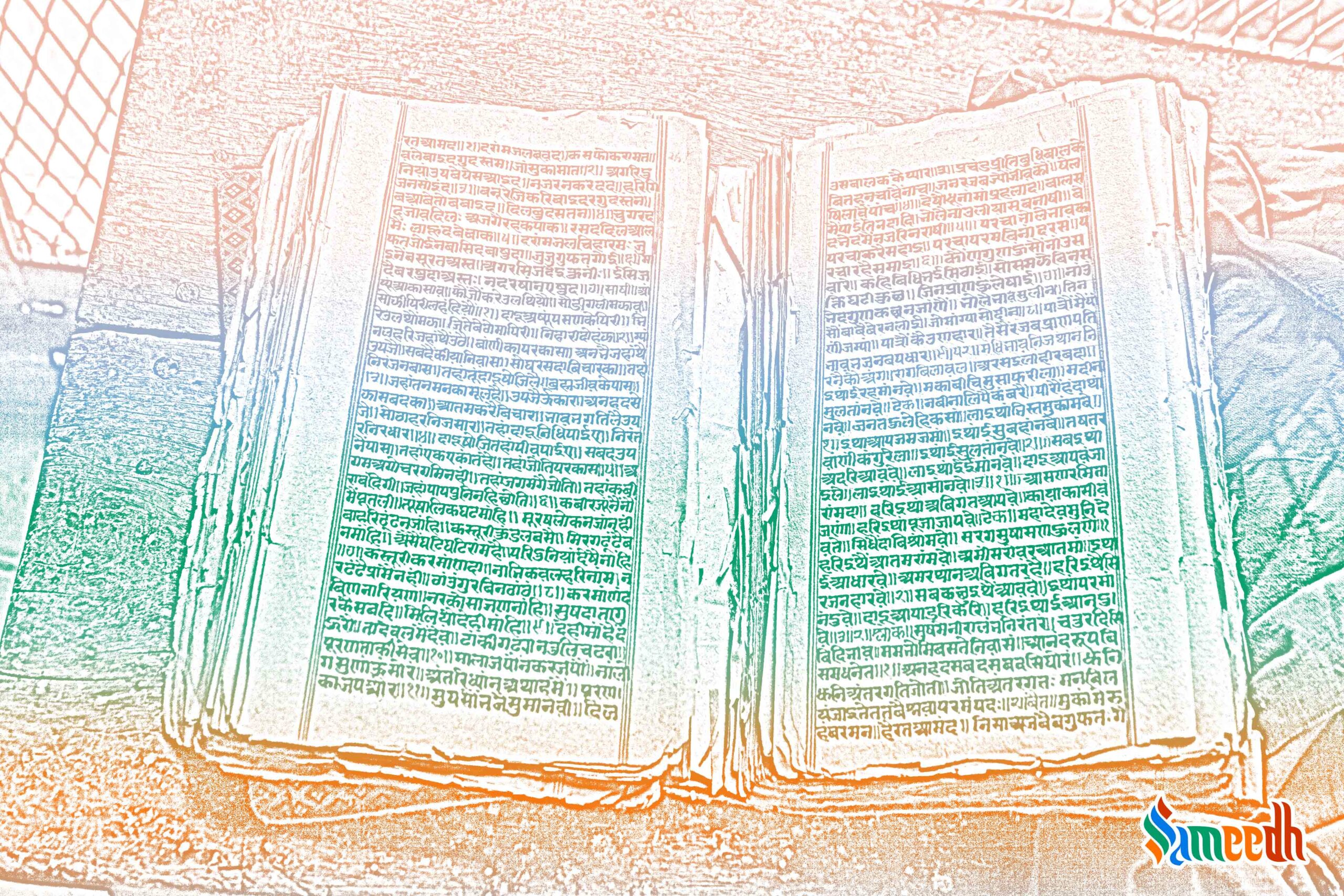This blog post details the beauty of the Vedas and the origin of Vedas in India. It talks about all the important elements of Vedas and the four Vedas which are most respected in our culture

ETYMOLOGY
Veda, means sacred spiritual knowledge and are the oldest scriptures on Hinduism. Originally, they were passed down orally. Written contexts of Vedic scriptures began between 1500 and 500 BCE.
DATING AND HISTORICAL CONTEXT
The age of Vedas in India began around 1500 BC with the first veda, Rig Veda. The conception of Vedas and more precisely, Rig Veda started post the decline of Indus Valley Civilization or Harappan Civilization. The wide expanse of knowledge of Indian Vedas is segregated into four compilations: The Rig Veda, Sama Veda, Yajur Veda and Atharva Veda.
They were written in Vedic Sanskrit. The Vedas were initially passed on from one generation to another through Shruti. It is basically a kind of passing on of knowledge through verbal mode. It constitutes the Shruti Literature of Vedas.
It is believed that this kind of knowledge resides in heaven and is awarded to human beings for their upliftment and welfare. The Shruti literature consists of the eternal truth which is unquestionable.
CONTENT
The whole expanse of Vedic Literature is basically divided in four types. The Brahmanas, The Aryanyakas, The Upanishads and the four types of Vedas: Rig Veda, Yajur Veda, Sama Veda and Atharva Veda.
The Brahamanas
These are basically books that explain and elaborate the vedas in a way that explains all the hymns. They were guide books for Brahman priests to explain the knowledge better.The Rig Veda has Two Brahmanas named Kaushitaki Brahmana and Aitareya Brahmana. The Samveda has Three Brahmanas named Tandya-maha Brahmana, Sadavinsa Brahmana and Jaiminiya Brahmana. The Atharva Veda has one Brahmana, Gopath Brahmana and the Yajur Veda has four Brahmanas: Kasthaka, Kapilsthakatha, Maitrayani and Taitriya.
The Samhitas
Another important component of the Vedas is the Samhitas. It is the most important textual part of the four Vedas that contain the Hymns. One of the most famous and important Samhita is the Samaveda Samhita. It is basically called the Book of Chants. It contains about 1549 hymns.
The Aranyakas
Another important part of the structure of all the Vedas is the Aranyakas. These are basically Forest books. It tells in detail about the vedic rituals which can be understood only by people who have a higher degree of understanding of Vedic literature. It was written for people who mainly lived in forests and participated in sacrifices for the happiness of the king and the world.
The Upanishads
One of the most popular and crucial part of the Vedas is the Upanishas. It comes in the end of the Vedas and talks about the philosophy, Atman and consciousness. Two most important Upanishads are Brihadaranyaka and Chandogya. They make up for a significant portion of all the knowledge in all the Upanishads
LEARNINGS
Rig Veda
It is the oldest veda in the vedic literature. It is dated back to 1800 BCE. It has about 10600 verses. It has 12 Mandalas as a part of it. It deals with philosophy of life, family and number of deities.
Sama Veda
It is the veda of melodies. It can be traced to somewhere close to 1000 BCE. It discusses the concept of worship. It contains about 1549 verses. This veda contains one of the most popular Upanishad, Chandogya Upanishad. It contains many melodies which form the basis of classical music and dance in Indian culture.
Yajur Veda
It basically deals with the concept of worship and all the knowledge regarding it. It can be traced to 1200 BCE.
Atharva Veda
It talks about the ideal way to lead life and details how everyday life should be dealt with. It contains about 700 hymns.
CULTURAL INFLUENCE
India has been a rich source of cultural significance, vedic culture being a core element, that denotes deep-rooted belief systems and sacred spiritual knowledge. The world of Vedic literature in India is beautifully rich and extremely abundant. To understand the culture and the ocean of Vedic literature, one needs to invest a lot of time and brilliant teachers who can explain the essence of Vedas well.
Indian contexts, its rich store of unique belief systems, customs, traditions and superior practices, Sameedh, presents all of this across versatile blog topics. Get enriched with intriguing information while you browse through other topics, here.